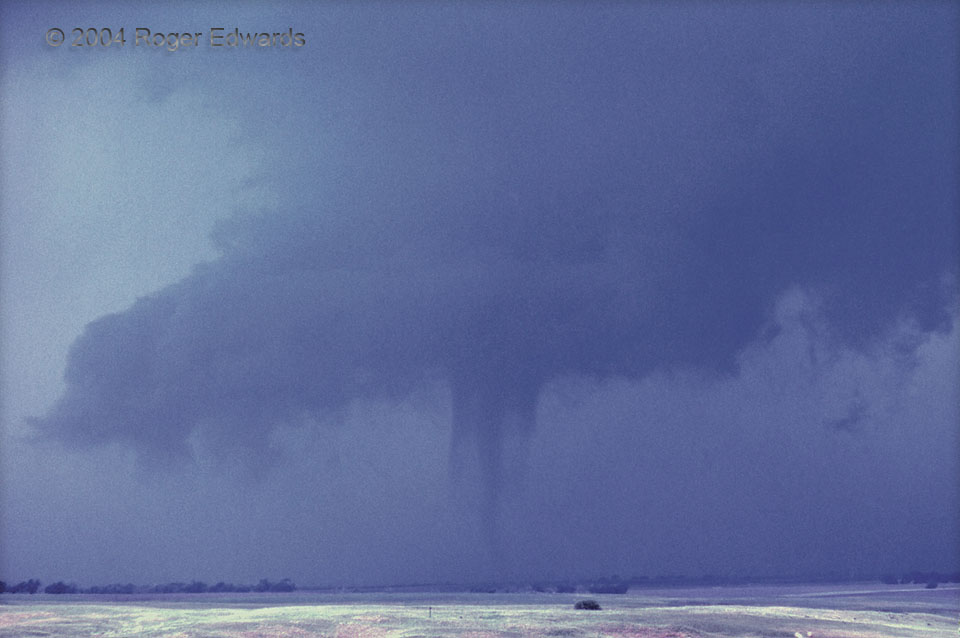Concentric tubes—inner and outer vortex components—are evident in this film slide of a tornado from Deuel County of the southeastern Nebraska Panhandle. If viewed in a cross-section, or a mobile Doppler radar image, it may have looked like two concentric rings with a “moat” or annulus between. This idea is much like the eyewall replacement cycle of a hurricane, and actually, that’s how this tornado behaved. As when a hurricane replaces its inner eyewall with an outer one, the outer vortex ring here became dominant and the tornado expanded in size, then filled in as it presumably intensified and its whole-circulation pressure fell as evident in the next image. Under very similar humidity and temperature, clouds condense sooner in lower pressure. Tornadoes are very good at decreasing the air pressure! Here, the outer layer’s cloud-condensation level was higher above ground than the inner one because of higher pressure outward from center (put another way, lowest pressure in the core region of the tornado vortex). Regardless, based on mobile-radar measurements of other tornadoes, the real outer edge of this tornado vortex probably was near or even beyond the edge of the outer visible condensation layer, even below its visible part at ground level.
4 NNW Big Springs NE (10 Jun 4) Looking NNW
